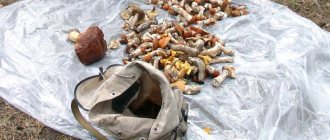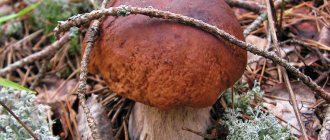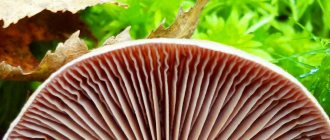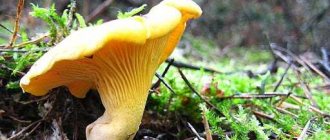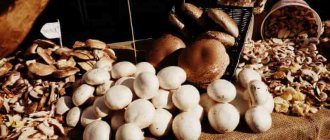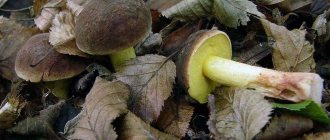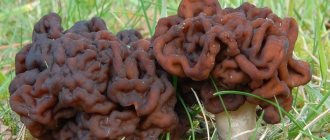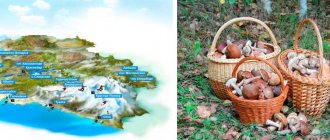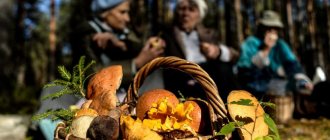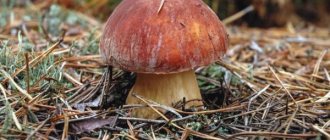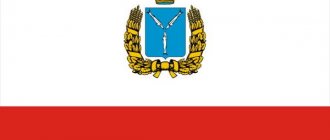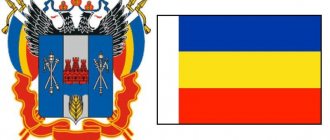All life on Earth is usually attributed to either the plant or animal world, however, there are special organisms - mushrooms, which for a long time scientists found it difficult to classify into a specific class. Mushrooms are unique in their structure, mode of life and diversity. They are represented by a huge number of varieties and differ in the mechanism of their existence, even among themselves. Mushrooms were first classified as plants, then as animals, and only recently was it decided to classify them as their own, special kingdom. Mushrooms are neither a plant nor an animal.
What are mushrooms
They grow like most other plants in the ground, but they are not classified as plants. They also cannot be classified as animals. In fact, mushrooms are a separate type of living beings.
What’s most interesting is that scientists are gradually coming to the conclusion that mushrooms contain characteristics of both plants and animals. However, as a separate class of living beings, they began to be identified relatively recently - in the 70s of the 20th century.
If you see something similar in the forest, avoid it. They don't look edible.
Option 3
What is an edible mushroom? Similarity is defined as the absence of poisons and the presence of the desired taste and smell. Therefore, it is not enough that some mushroom does not make you sick, it must also be edible! (Although we all know that taste is, well, a matter of taste.) Very few species meet these criteria, which is why most mushrooms are considered inedible.
The practice of eating mushrooms dates back thousands of years. The first reliable evidence appears with the Chinese and continues to this day, spanning many different cultures.
From cultivated porcini mushrooms to the elusive morels and truffles, edible mushrooms continue to enjoy popularity around the world. I've included a lot more information below, starting with the important things to know. This includes both health benefits and dangers. We'll then move on to cultivated and wild mushrooms and finish with proper preparation of edible mushrooms.
Important things to know:
Edible mushrooms are known for their health benefits. In addition to being low in sodium, fat and calories, most mushrooms contain:
- fiber;
- potassium;
- protein;
- selenium (an important antioxidant);
- L-ergothioneine (another powerful antioxidant);
- copper (essential for cardiovascular health);
- niacin (an important B vitamin);
- cancer substances (polysaccharides, linoleic acid);
- zinc.
Of course, your mileage may vary depending on the type of mushroom and the environment in which it grew. To reap the greatest health benefits, it is best to consume mushrooms that have been grown organically or selected from a non-toxic environment.
Considering bad conditions leads us to the disadvantages, to the possible dangers. These hazards include man-made toxins, poisonous mushrooms, alcohol consumption and allergic reactions.
Man-made toxins, such as mercury or pesticides, become concentrated as the body absorbs nutrients from the environment. Never eat mushrooms from contaminated areas.
Some poisonous mushrooms can cause illness or death. If you collect specimens from the wild, always make positive identification before eating.
Alcohol interacts poorly with several species, such as Coprinopsis atramentaria. Take care if you eat and drink a lot of mushrooms.
They say that everyone is allergic to something, and there are cases of fungal allergies.
Avoid problems by educating yourself about what you eat.
Various types of edible mushrooms. Edible mushrooms are either commercially cultivated or selected from the wild. You can also try growing them at home on a small scale.
Commercially cultivated mushrooms are produced in farms and growing sites around the world. Below is a list of some common types that go from the growing room to the grocery store.
Porcini mushrooms - Agaricus bisporus - Common white button mushroom in stores.
Cremini - Agaricus bisporus - Slightly larger. Known for its firm texture.
Portobello - Agaricus bisporus Popular on its own and as a meat substitute.
Oyster - Pleurotus ostreatus is one of the easiest species to grow and is produced throughout the world.
Enokitake - Flammulina velutipes - These long, thin mushrooms are popular in soups.
Shiitake - Lentinula edode s - These famous mushrooms are delicious and good for you.
Wild mushrooms are a little more complicated. Some species have a mycorrhizal relationship with specific trees and plants. The fungus penetrates the roots of the tree, giving it access to the energy content of the sugar and giving the tree more surface area to absorb water and nutrients.
There is a huge mushroom harvesting industry that has generated a lot of controversy. It is not yet known what the environmental impact of removing so many fungi is. There is also controversy about how migrant mushroom harvesters are processed.
So the next time you're lucky enough to be able to afford to buy edible wild mushrooms, take a moment to consider where they came from and who chose them for you!
Depending on where you live, you can save yourself money and any crisis by choosing them yourself. This is not a task to be taken lightly as a mistake can make you sick or worse.
Many people love mushrooms.
What does the body of a mushroom consist of?
It seems like a simple question. We all went into the forest and saw them alive and even collected them. Do you think a mushroom consists only of a cap and a stem? Not really. The cap with the stem is the only visible part of the mushroom body - the fruiting body. Their structure is much more complex. Each of them has tiny roots underground. They are no thicker than a hair. They are called mycelium or, scientifically, mycelium.
These roots grow very strongly, meet and combine with the roots of other mushrooms. As a result, the mycelium is one large network that can cover an area of several square kilometers. This entire network is one big living organism! This is such an unusual creature, a mushroom.
Honey mushroom family
Small mushrooms with round caps are always arranged in groups. They grow on green meadows and stumps. Every mushroom picker loves these fragrant babies. When starting to depict these beauties, it is better to look at them in person. After all, it is so unusual for them to gather in friendly companies. But, if this is not possible, you can look at the photo and make our step-by-step lesson.
- Let's draw a cylinder - this is the future stump. We mark the location of the mushrooms with thin lines. Two will be at the bottom left, and a group of five will be at the top right on the edge of the stump.
- We thicken the legs. We draw semi-oval caps.
- Now we color the work with colored felt-tip pens. The mushrooms themselves will be light brown. Don't forget to show the skirt under the hat and on the leg. The stump is dark brown in color. The top of the cut is yellow.
- We add a little yellow to the mushroom itself, showing the transition from dark to light areas. We darken the bottom of the stem of each honey mushroom.
- Draw the roots of the stump and the grass.
You can make a drawing unique by adding just a little bit of your vision. Even following our general step-by-step master classes, each person’s paintings will be different. And that's great. After all, every video world is different.
Attention! Twin mushrooms
By the way, are you aware that some poisonous mushrooms disguise themselves as edible? It is these doubles that people are most often poisoned by. Not everyone knows how an ordinary porcini mushroom differs from a false one, and how false honey mushrooms differ from ordinary ones. Here's a few examples:
And one more, more complete reminder, just in case:
All mushrooms grow differently. Some people prefer loneliness or the company of 2-3 relatives. Some people, on the contrary, in large groups, such as honey mushrooms, will find a stump and live on it amicably.
First aid
In case of poisoning with poisonous mushrooms, first of all, you need to call a doctor at home. Before his arrival, the person is put to bed and given assistance. For abdominal pain and nausea, give several glasses of a weak solution of potassium permanganate or boiled water with soda to drink. After gastric lavage, it is advisable to take activated charcoal orally. In some cases, they offer to drink milk or use a laxative.
Milk is an effective remedy for poisoning.
After this, the patient is covered warmly, allowed to rest, and later given hot tea.
Recommended by topic
Hogweed is a poisonous plant: reports for grades 2 and 3 on the surrounding world. A report on poisonous plants for grade 3 on the surrounding world. A report on poisonous mushrooms for classes 3-7 of poisonous ones is simply necessary. At least to avoid accidentally bringing a poisonous mushroom home. Even a small piece of such a mushroom, if ingested with food, can cause severe poisoning and, in some cases, death.
Moreover, it turns out that not all edible mushrooms are worth taking home, much less boiling, frying and eating. I'm now talking about those that grow along the road, in all sorts of landfills and other not very clean places. You can’t eat them because they are like sponges, absorbing all harmful substances from the earth and air. What could happen around a busy highway? Dust, soot, exhaust gases...
Remember : you can only eat mushrooms that were collected in ecologically clean areas.
Fly agaric description for children
A fly agaric description for children will help you remember what a fly agaric looks like and learn new facts about it.
Fly agaric description for children
The mushroom with the unattractive name fly agaric is actually very beautiful: it has a large bright red cap with white dots and a slender, long leg with a frill. This mushroom is clearly visible from a distance and is difficult to confuse with other mushrooms. And everyone recognizes him, even children. The fly agaric cap is from 8 to 20 cm in size. Its shape is hemispherical at the beginning, then opens to flat and concave. The skin is bright red, of varying color density, shiny, dotted with white warty flakes.
The leg of the fly agaric is cylindrical, 8-20 cm high, white or yellowish.
The mushroom is so called because earlier, when there were no remedies for flies, it was used as a poison: poured with milk and covered with a cloth so that it was soaked in milk. The flies sat on the rag, drank the poisoned milk and died.
Fly agaric is considered a poisonous mushroom - if you eat it, you can get poisoned and even die. But various forest animals - moose, bears and squirrels feed on fly agarics, which do not cause them any harm.
There are many types of fly agaric - panther with a black cap, classic and royal. But the mushroom with the red cap is considered the most poisonous. The highest concentration of poison is observed in the white dots on the cap.
Most of the poison is found in young mushrooms. With age, the number of dots on the cap decreases, which means the amount of poison also decreases. It's so cool! If only it were the same with people!
Previously, when there were no stimulants or dietary supplements, they made a tincture of fly agarics and drank it before the fight. And the warriors became much more fearless and insensitive to pain. Just had to not overdo it!
Previously, in Rus', many diseases were treated with fly agarics, preparing tinctures and decoctions from them. And they were cured!
To truly become poisoned, an adult needs to eat 13–15 red fly agaric mushrooms. And for children and old people one piece will be enough.
The polka dot fabric was invented after the designer saw a fly agaric. It's hard to imagine how we would all live without polka dot fabric.
If you see a fly agaric, look next to it for a “noble” mushroom - boletus, boletus or boletus.
Artists, especially illustrators of children's fairy tales, love to draw beautiful fly agarics. And this is absolutely correct.
Therefore, fly agaric is a wonderful mushroom! And without him our life would be much more boring.
Source
Why pick mushrooms
This is how we smoothly moved on to the most delicious part. What can you cook from mushrooms collected in the forest? They are salted, dried, fried, made into soups, and added to very tasty sauces and salads. There are a lot of different recipes.
Do you smell this smell too?
Mushrooms are not only boletus mushrooms, honey mushrooms and fly agarics that are more familiar to us. Ordinary culinary yeast is also a type of mushroom, mold that appears in damp rooms and on spoiled foods is also a mushroom. There are even some that are so small that they can only be seen through a microscope.
Try not to breed such beauty at home. Getting rid of mold is very difficult.
